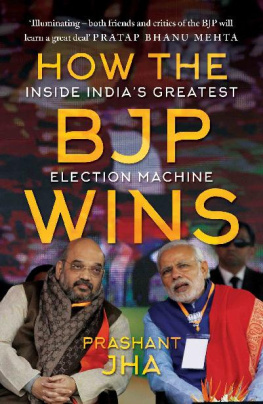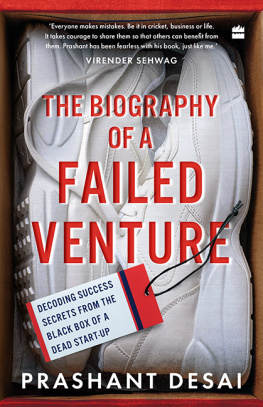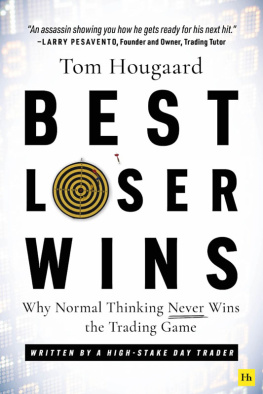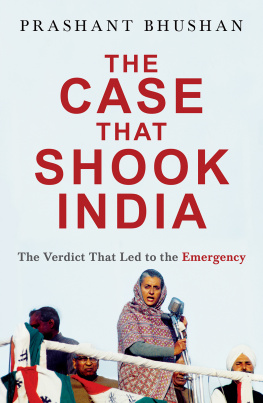How the BJP Wins
Preface
To
Ruhi
for being my anchor,
for the long walks in North Campus,
and
for the life ever since
Introduction
2014: The Turning Point
If central Delhi is the power centre of the Indian state, then the Windsor Place roundabout is its nerve centre.
Take Raisina Road, the avenue on the west, and you will soon be in front of the Parliament of India. Janpath which runs through the circle leads on one end to the iconic Rajpath, India Gate and Rashtrapati Bhawan; on the other end it heads towards the old city-centre, Connaught Place. Ferozeshah Road will take you past the residences of many politicians, ending at the Mandi House circle, a hub of Indian theatre and arts. A short walk away is Shastri Bhawan, home to key ministries.
On the evening of 12 March 2017, Narendra Modi strolled up from the circle on to Ashoka Road, towards the Bharatiya Janata Party (BJP) headquarters, greeting supporters on both sides of the road. In the previous month, five states had held their elections. Four of the five were now in BJPs kitty. The previous day, the party had won a spectacular victory in the Uttar Pradesh assembly elections, winning over three-fourths of the seats. The BJP had also swept Uttarakhand and would form the government in Goa and Manipur. Only in Punjab, after two terms in office, had the BJP and its ally, Akali Dal, lost power.
The Modi-Modi chant extended from the streets to the party office, where the prime minister was to address the leaders, cadre and the nation, in his moment of victory.
He began by greeting everyone on the occasion of Holi. Elections, he said, were not just an instrument for forming governments but helped deepen the faith of people in Indian democracy. And then he delivered his big takeaway from the election.
I see the results of the five states particularly that of Uttar Pradesh, which has the capacity to give India a new direction, strength and inspiration because of its size as laying the seeds of a New India. This was, Modi declared, the golden period for the BJP. He acknowledged the role of four generations of leaders, thousands of cadres and party president Amit Shah and his team, whose work had placed the BJP in the position it was in today.
This is indeed the BJPs golden period. Less than ten years ago, the party was being written off. Many declared it had little prospect of returning to power in Delhi. Even five years ago, it seemed inconceivable that the BJP would not only win an outright majority in the national elections, but also have thirteen chief ministers across Indian states.
Today there is talk about whether it can be displaced at all in the foreseeable future. It has achieved this dominance through the tested ritual of Indian democracy elections and this may just be the beginning. Under Amit Shah, the BJP aims not just to expand its footprint across the country but to win every level of elections from Parliament to the panchayat.
This book tells the story of how the BJP wins these elections, why it has lost when it has and what lies in the future.
***
The 2014 Lok Sabha elections redefined Indian politics. Since 1984, no party had won an absolute majority in the national elections. India, it was now widely assumed, would continue to have a fragmented polity, two weak national poles around which regional parties coalesced, and coalition governments.
One election changed it all.
The BJP won 282 seats, contesting 428 of the total of 543 seats, leaving the rest for its National Democratic Alliance (NDA) partners. This meant that not only had the party achieved a decisive majority on its own, it had won two out of three seats where it was directly in the fray. This was a remarkable strike rate.
Nationally, its vote share was 31.1 per cent, but its vote share was close to 40 per cent in the seats where it had put up candidates. This was the first time since 1991 that a party had won more than 30 per cent of the vote share. The average margin of victory in constituencies that the BJP won was 17.9 per cent spelling a huge gap between the winner and the runner-up. So not only did the BJP win the majority of the seats, it won them with a resounding mandate.
Geographically, the BJP won 44 per cent of the vote, and 190 out of the 225 seats, in the Hindi-speaking states of Himachal Pradesh, Uttarakhand, UP, Bihar, Jharkhand, Chhattisgarh, Madhya Pradesh, Rajasthan, Haryana and Delhi. With its NDA allies, it won 201 of these seats. In the non-Hindi-speaking states, the BJP won 22 per cent of the vote share, and 92 of the 318 seats, but along with its NDA partners, it was able to garner 42 per cent of the seats. It also went beyond its original areas of influence in urban India to win support from semi-urban and rural India.
This staggering scale of victory was possible because one man, Narendra Modi, stitched together a rainbow coalition.
***
Narendra Modi was the Hindu leader. He was the development man responsible for the Gujarat model. He was the strong administrator who had thirteen years of experience running a state, compared to Rahul Gandhi, who had no personal governance experience and the baggage of the scam-ridden, paralysed United Progressive Alliance - 2 (UPA-2). Modi was the leader who would fulfil the nationalist dream of teaching Pakistan a lesson.
To the upper castes, Modi represented a party which was most in tune with their aspirations and would bring in stability, order and progress; to the deprived castes, Modi was one of their own who would deliver justice and jobs. To the upper middle classes and middle classes, his strongest base, Modi was the man who would make them richer, like he had made Gujarat richer, through liberal economic policies; to the disadvantaged, he was the chai-wala who had made it big, yet was being hounded by the elite. To all of them, he represented hope.
While there was unparalleled consolidation of the upper castes and middle classes behind the BJP, for the first time ever, nationally, the BJP got more Dalit and Scheduled Tribe votes than the Congress. In fact, more Dalits and tribals voted for the BJP than for any other party, and out of the total votes received by the party, 40 per cent came from other backward classes (OBCs). This is an important milestone in Indian politics.
All this offers some explicit pointers, and some intriguing hints, about the formula behind the BJP victory in 2014 and its success, and failure, since then. When it gets this right, it wins. When it does not, it fails.
Modis multiple avatars worked in 2014. But they did not work in 2015, as the BJP lost two major state assembly elections Delhi and Bihar. Rahul Gandhi, in his sharpest political intervention in the past three years, called the Modi sarkar a suit-boot ki sarkar. Suddenly, within a year, Narendra Modi had gone from being a leader of all Indians to a man who was perceived as batting for the rich, and spending all his time outside India.
But clever and astute politician that Modi is, he recognized the dangers of falling into this image trap, and reinvented himself. Through a set of policy moves and pronouncements, and focusing back on the welfare state, he now positioned himself as a garibon ka neta, a leader of the poor.
This book tells the story of how this image transformation took place; how Modi is becoming the first choice of a section of Indias poor and lower-middle class, even as his original constituents of upper-middle classes continue to stay with him; and how, in the process, the BJPs class base is slowly expanding. This shift enabled the BJPs tremendous success in more recent elections, including Uttar Pradesh.
***










